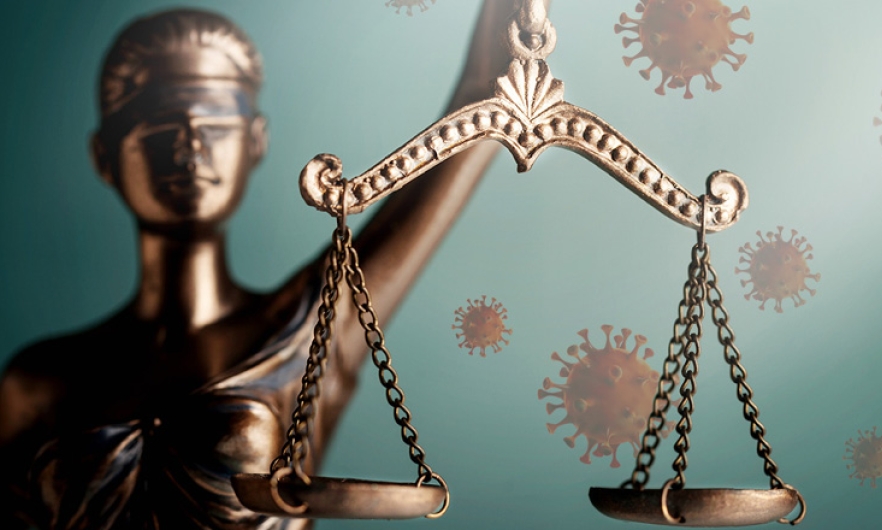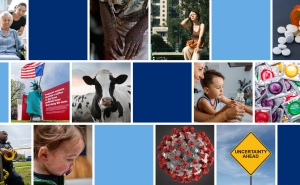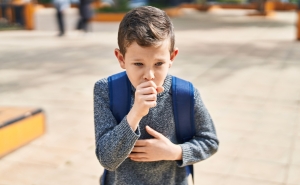COVID-19 and the U.S. Criminal Justice System: Evidence for Public Health Measures to Reduce the Risk of COVID-19

A Q&A with Crystal Watson and Chris Beyrer
So far, 10 of the largest clusters of COVID-19 outbreaks in the U.S. have been in prisons, jails, or correctional facilities.
Outbreaks spread fast in these overpacked facilities with shared living spaces: The average daily growth rate of cases from March 1, 2020, to June 6, 2020, was 8.3% in prisons compared to 3.4% among the general U.S. population. A modeling study of ICE detention centers predicted that once the SARS-CoV-2 virus enters a facility, 72%–100% of individuals will be infected within three months.
These facilities are also disproportionately populated by Black people and people of color who have higher incidences of chronic illnesses and comorbidities like diabetes and hypertension—making them more susceptible to severe disease from COVID-19.
Death rates are much higher in prisons and detention centers: The age-adjusted COVID-19 death rate for people who are incarcerated or detained in the U.S. is three times higher than the overall population.
Outbreaks in these facilities are also likely to impact surrounding communities. One study suggested that, as of April 2020, a single jail in Chicago’s Cook County was associated with 15.9% of all COVID-19 cases in Chicago due to people cycling in and out of that facility. Courthouses, an integral part of the criminal justice system, present further risks for COVID-19 transmission among detainees and the surrounding communities.
The Center for Health Security along with other scholars from the Johns Hopkins Bloomberg School of Public Health has released a report, COVID-19 and the U.S. Criminal Justice System: Evidence for Public Health Measures to Reduce the Risk of COVID-19. The report summarizes the current state and future projections of the COVID-19 pandemic in the U.S., and provides evidence-based recommendations for protecting from COVID-19 all of the people who touch the criminal justice system, including incarcerated and detained people, staff, and jurors.
Two coauthors of the report, Crystal Watson, DrPH ’17, MPH ’09, and Chris Beyrer, MD, MPH ’91, break down some of the key points in this Q&A.
Who is this report intended for?
The report was written at the invitation of the Council on Criminal Justice to provide current scientific information on COVID-19 in the criminal justice system.
But the report is intended for a much wider audience as well: for criminal justice professionals, courts, and affected communities.
What are some recommendations for jails, prisons, and detention centers to reduce risks of COVID-19 transmission?
Many of the report’s recommendations do not differ from current public health best practices in general, such as mask wearing, for example, which we now know to be so important for reducing the spread of COVID-19, particularly in closed and crowded indoor settings, of which prisons, jails and detention centers are such clear examples. But there are also recommendations that are more specifically relevant to these facilities, the most important of which is to do everything possible to reduce overcrowding and minimize risks in these institutions to reduce overcrowding and minimize the risks of COVID-19 for elderly and otherwise vulnerable persons in carceral settings.
Have you seen success with jurisdictions implementing these recommendations?
There have been some notable successes. In the area of keeping jail census numbers low, the State’s Attorney for Baltimore, Marilyn Mosby, sharply reduced the numbers of persons being jailed for misdemeanors and unpaid fees and fines.
Unfortunately for many prison systems, outbreaks of COVID among staff and detainees were the triggers for action. Generally, those late responses have meant that many outbreaks in detention facilities have been large, with very high rates of infection, and have proven difficult to control.
How has law enforcement played a role in COVID-19 transmission and protection?
Law enforcement has many important roles to play in protecting the health of the public, including modeling the behavior—like masking and social distancing—that we want to see in all public service professions. Enforcing mandates has also been an important role.
However, there have been allegations of unfair policing practices, where minority communities and persons have been seen to be targeted for enforcement of COVID-related restrictions. Whenever public health restrictions are seen as unfair or discriminatory, they are harder to enforce.
What can court systems do to protect staff, defendants, and juries?
Court systems can be challenged to meet social distancing safety guidelines. Many were typically crowded or overcrowded before the pandemic, and often include mixing of people from within detention facilities with lawyers, families, and others from the community—all risks for COVID-19 spread. Many court systems were closed at the height of the lockdown in the spring. Some have reopened with virtual or hybrid formats.
What do you think is most important for the average person to understand about the criminal justice system and COVID-19?
All of the actions we have been asked to take as a society—to socially distance, avoid indoor crowds, and practice good hygiene—are much, much harder to maintain for persons in jails, prisons, and detention facilities.
Yet when someone has their liberty taken away on our behalf, we take on a special responsibility for their health care. We have an obligation to do much more to protect everyone in the detention environment, including staff and contractors.
What should families of incarcerated persons know, and how can they help?
Keeping in contact with family members in detention is critically important and is known to have major impacts on reintegration after release. Many facilities are now allowing family visits, and this is particularly important for detained parents. These visits often happen in outdoor settings, and must, of course, follow social distancing guidelines, health screening before visits, and mask wearing. But, as we’ve all learned, mental and emotional well-being are important to health as well as reducing COVID exposures.
Are there suggestions in the report that could help permanently improve these facilities beyond COVID-19?
Yes. COVID is not the first pandemic to disproportionally affect incarcerated people and those who work with them.
Tuberculosis, multidrug-resistant TB, viral hepatitis, and MRSA (multidrug-resistant staph) have all had major prison outbreaks in multiple countries. Prevention and health care access are vitally important for detainees. And prisons and prisoners are not hived off from the rest of us—their health also matters for all of our health.
Crystal Watson, DrPH, MPH, is a senior scholar at the Center for Health Security. Chris Beyrer, MD, MPH, is the Desmond M. Tutu Professor of Public Health and Human Rights and director of the Center for Public Health and Human Rights.





